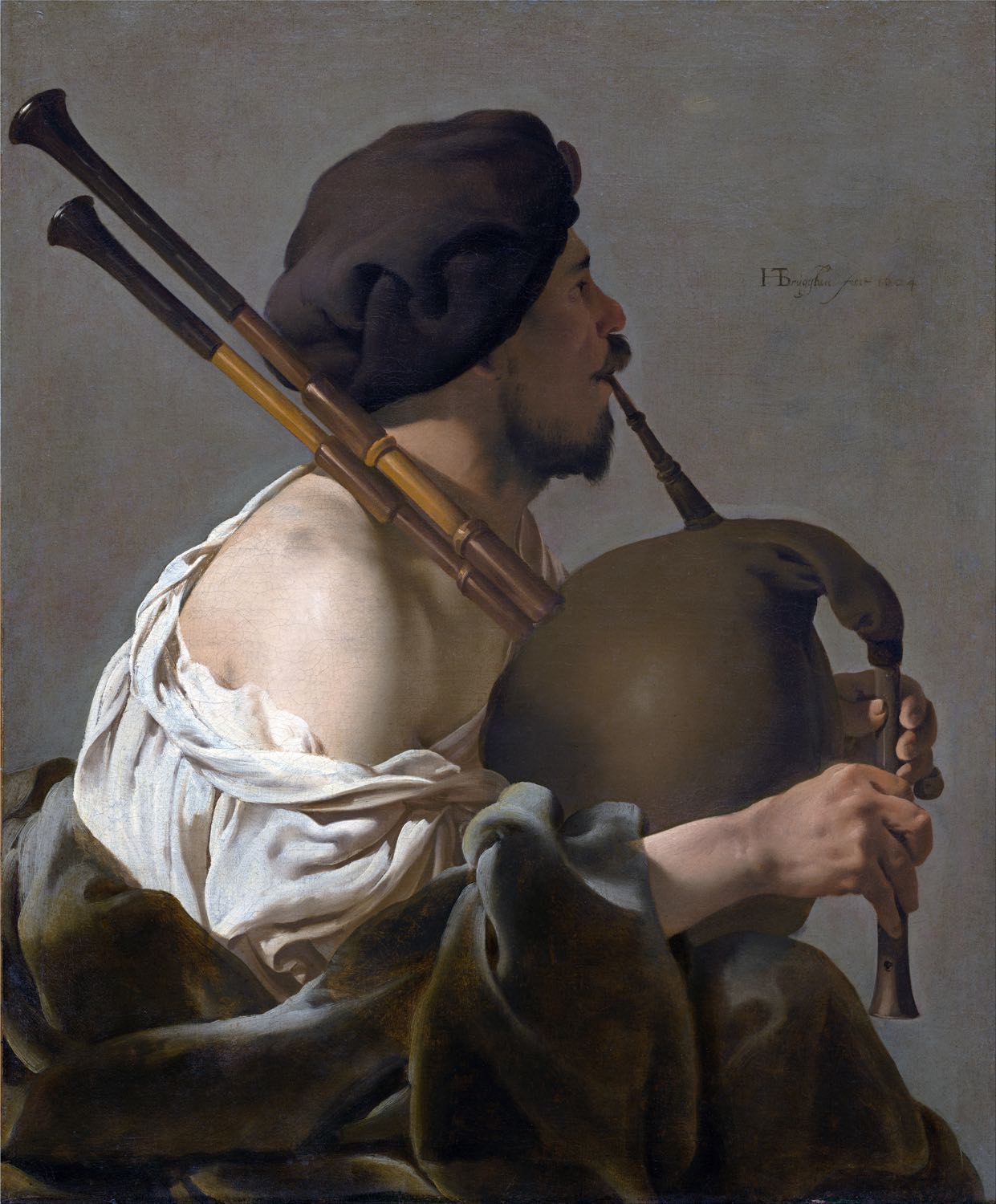
CORNEMUSE, BAGPIPE, MUSETTE.
THE Bagpipe (Cornemuse and Musette) and the hurdy- gurdy (Vielle) were, after the thirteenth century, banished to the lower orders, to the blind and to the wandering mendicant class. But polite society in France resumed these instruments (Musette de Cour) again in the modern Arcadia of Louis XIV. and XV. – not the Cornemuse, it is true, for that has ever remained a rustic instrument, as may be observed in the glowing pages of George Sand’s Les Maîtres Sonneurs.
The Musette de Cour enjoyed great popularity in the baroque period. Especially in the course of the shepherd’s fashion, which was enthusiastic about everything rural, the musical instruments of the common people such as bagpipes, hurdy-gurdy and one-handed flute came into fashion and found their way into the courtly musical culture.
The Cornemuse, as formerly used in France and the Netherlands, is derived from the Roman tibia utricularis, and is provided with a bag, inflated by the mouth of the player, while a double reed is attached to the melody pipe or chanter. In recent times it is furnished with two drones – le grand, et le petit bourdon, which are made to sound also by reeds, and an octave apart.
The Musette, which has practically displaced the Cornemuse in use, is a softer, sweeter instrument, with a double reed to a very narrow cylindrical pipe, the effect of which is to make it sound like a stopped pipe, an octave lower. This accounts for the short appearance of the instrument. The drones, as it will be seen, are on a more artificial principle than those of the Cornemuse.
Another difference is that the bag is always inflated by a small pair of bellows worked by the player’s left arm. The Northumbrian and modern Irish bagpipes are also inflated by means of bellows, and have taken the place in northern England and Ireland of the large bagpipe inflated with the mouth which is now regarded as distinctly Highland Scotch.
The Musette in the drawing is made of ebony and ivory with keys of silver, and has a bag adorned with needlework. The small bellows are made of walnut inlaid with marqueterie. The melody pipe (le grand chalumeau) is bored with eight finger-holes, and fitted with seven keys for the chromatic notes. To the left of the melody pipe or chanter there is a small flask-shaped pipe furnished with six keys (le petit chalumeau) containing the additional compass upwards. There are four drones contrived in a barrel pierced with thirteen bores in juxtaposition, of from 5 to 35 inches in length. The barrel is furnished with five stops sliding in grooves and regulating the length of the apertures for tuning the drones. Bach’s musettes, the alternatives to his gavottes, always imply a drone bass.
It will be observed the Cornernuse here drawn has a chanter and drone fixed parallel in one stock. The former has eight finger-holes, and, like that of the Scotch bagpipe, has a vent-hole not fingered. The bag covered with crimson plush is furnished with a short mouthpiece near the neck for the purpose of inflation.

The Calabrian Bagpipe or Zampogna is a rudely carved instrument of the 18th century. It has four drones attached to one stock, hanging downwards from the end of the bag: two of them are furnished with finger-holes. The reeds are double like those of the oboe and bassoon. The bag is large; it is inflated by the mouth and pressed by the left arm against the chest of the performer.
The Zampogna is chiefly used as an accompaniment to a small reed melody pipe called by the same name, and played by another performer, The quality of the tone produced is not unpleasing. It has five holes only, and consequently the seventh of the scale is absent, but this can be easily got by octaving the open note of the pipe and covering part of the lower opening of the chanter with the little finger.
The Musette, Zampogna, and Cornemuse here shown are from specimens belonging to Messrs. J. & R. Glen, Edinburgh.
Source: Musical instruments, historic, rare and unique; by Alfred James Hipkins and William ill Gibb. London : A. and C. Black, ltd. 1921.
